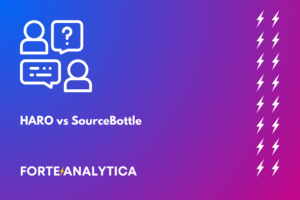Two popular approaches that have emerged as pillars of many link building strategies are HARO (Help a Reporter Out) and link insertions, also known as niche edits.
Since both techniques require a substantial investment of time and effort, causing many in the industry to question which approach is best in terms of ROI.
HARO
HARO, the venerated stalwart of reactive PR, has long been the preeminent platform for journalists comments from subject matter experts. However, its burgeoning popularity has made it gradually harder to land a link successfully. And you can throw out any notion you may have of it being predictable.
The allure of HARO can ensnare the uninitiated. Without a firm understanding of its nuances, responding to HARO queries can devour valuable hours that could be allocated to alternative, more fruitful link building strategies.
Benefits of HARO
It would be unrealistic to expect every link obtained through HARO to be from a top-tier publication, but there are still plenty of opportunities to get a link from domains you’d struggle to any other way.
- Cost-effective: Disregarding the cost of your own time, responding to HARO queries is free.
- High-quality backlinks: Journalists writing for reputable publications use HARO. Links from seed domains — or sites closely linked with seeds — can improve your website’s domain authority and ranking ability.
- Opportunities to establish thought leadership: By being featured in news articles as a source, your business can establish credibility and thought leadership in your industry.
- Develop direct relationships with journalists: HARO is a channel you can use to connect with journalists and potentially develop relationships with them for future PR opportunities.
Cons of HARO
Harnessing the power of HARO is no walk in the park, as those of us who have delved into its depths can attest.
- Time-consuming: To pitch successfully and land a valuable link, you need to invest time in crafting a compelling response to the journalist’s query.
- Low success rate: Due to the high volume of submissions from other sources, it can be difficult to get picked for a story.
- Limited backlink control: You cannot guarantee that your link will be included in the final article, or that it will be anchored with relevant keywords. Some publications also apply the nofollow attribute on all outbound links.
- Posts can be orphaned quickly: Large publications publish a lot of new pages. You may need to send some tier two links to it.
Link insertions
Link insertions involve partnering with bloggers or website owners to place a link to your website within their existing content. This can help to improve your website’s domain rating and increase organic traffic.
Although the end result is similar, it is generally easier — in our experience, anyway — to secure a link insertion than it is to get a guest post over the line.
Pros of link insertions
From bolstering authority and strengthening link profiles to fostering valuable relationships and driving targeted traffic, the benefits of incorporating relevant and authoritative links within content are undeniable.
- Boost authority: Like HARO, link insertions can augment an existing link profile and help with rankings.
- Full control over anchor text: You can ensure that the link is anchored with relevant keywords and placed within contextually relevant content.
- Get a link from a ranking page: You can choose to link to specific pages on your website from pages that already rank for relevant keywords and traffic.
- It’s quicker than guest posting: There’s generally less haggling to be done.
Cons of link insertions
- Cost: Link insertions usually involve paying the website owner a fee in exchange for the link placement, which can add up for businesses on a budget. It’s also technically in breach of Google’s Search Essentials (formerly Webmaster Guidelines).
- Time-consuming outreach: Although the process from start to finish is typically faster than placing a guest post, finding relevant websites and reaching out to them to request link insertions can be a time-consuming process.
- Not every site has relevant content: If you operate in an obscure niche, it can be hard to find relevant websites to get a link from never mind a relevant page on a relevant domain.
- Risk of low-quality links: If you partner with low-quality websites, your domain could actually be harmed, a situation you can find yourself inadvertently accepting if outreach has proven more difficult than expected.
Which strategy is best?
Deciding between HARO links and link insertions ultimately comes down to your business goals, resources, and budget.
If you have time to invest in a pitching strategy and want to establish thought leadership, HARO may be the way to go. However, if you have a budget for link building and want more control over your backlinks, link insertions may be a better fit.
It’s important to note that you don’t have to choose just one strategy. Many businesses use a combination of HARO and link insertions to achieve their SEO goals.
FAQs
Are HARO links better than link insertions for SEO?
It depends on your business goals and resources. HARO links can come from extremely powerful publications, some of whom may be competing with you, but the success rate of getting coverage can be low. Link insertions allow for more control over anchor text and placement, but require a budget for payment.


